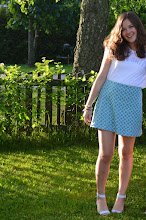The
topic of sustainable fashion always comes off as a tedious subject
that most people just want to brush under the carpet and ignore.
After all there are so many more intriguing subjects in fashion, such
as emerging talents, the secrets of traditional fashion houses and
new techniques in production that people would rather talk about. But
when pressing issues such as factories collapsing surface, we have to
start making drastic changes about the perception of sustainability
and soon.
Shocking
information about high end designers arises every time a discussion
about ethical fashion opens up. Some do not know where their clothes
are made, and 48% of brands last year had not traced the factories
where their clothes came from. Even more were not aware of where
their raw materials came from.
But this
is not what you want to hear. If you are going to read an article
about fashion, you want it to fulfill your wildest dreams about a
glamorized industry, not some ramblings for the recycling of old
fabrics. However, sustainability is about so much more than this. It
is a major and provocative theme to explore through a collection. It
can evoke a strong emotional response and icons like Vivienne
Westwood have been making it a worthy topic with provocative imagery
and print tees.
What
needs to be done is make sustainability go through a transformation
from a trend to a timeless requirement: something as necessary as
advertising for designers. A few UK based designers are already
taking a stance, and Stella McCartney is amongst the most known
advocates of ethical fashion and Katherine Hamnett who was a pioneer
of fair trade principles. There is a looming feeling of the progress
getting slower however.
There
are initiatives like the Green Carpet Challenge that Erdem took a
part in during LFW this fall, using lace leftovers from old
collections and fabrics made from recycled fibers and plastic
bottles. Faustine Steinmetz' reconstructed old denim jackets,
Christopher Raeburn used naturally dyed silk and Katie Jones'
knitwear showed how upcycling can be edgy. These are designers that
are creating positive promotion for a serious issue, in a way in
which more people will see it as an exciting opportunity.
However,
usually the focus of younger, emerging designers is placed upon the
creation of innovative garments with interesting technical details,
and not much attention goes to the environmental consequences or the
treatment of the workers. Fashion schools should be placing more
emphasis on the teaching of ethical fashion as a chance to
differentiate whilst taking a stance with an important issue.
Students may not know the most cost effective way to be ethical, and
therefore simply decide to ignore it.
It needs
to be acknowledged that being sustainable isn't an unfortunate
guideline you need to follow, but an opportunity to create unique
fabrics that will make your designs stand out and create a positive
reaction from the public. The advantages of ethical fashion is simply
not discussed on the same level as its horrible consequences are.
The
problem doesn't seem to be with consumers not wanting to buy ethical
clothes, it is with designers not providing them with suitable
products. There isn't enough range; if a garment is organic it's
basic and old fashioned. As Senior Curator at the Museum of Modern
Art Paola Antonelli says: “Few labels are as frayed and worn
out as "green" is. In absence of any organised approach or
regulation, manufacturers and users alike have flaunted and
overstated ecological virtue to the point of devaluing it”. If
”green” became popularized in a way that made it look tasteful
and important, we would be well on our way to a more environmentally
friendly industry.”
As the
bigger design houses set an example for younger designers to follow,
we can hope more emphasis will be put on the consequences of poorly
planned production so that we can make a real difference and change
the way ethical fashion is seen. It's no longer old patchwork rags,
but an intriguing way to contribute to a world wide issue.
Wearing a vintage jumpsuit








1 comments
Great post ! Love your style
ReplyDeletehttp://www.fruityandpassion.com/2016/02/gy-kimchoe-aw16.html